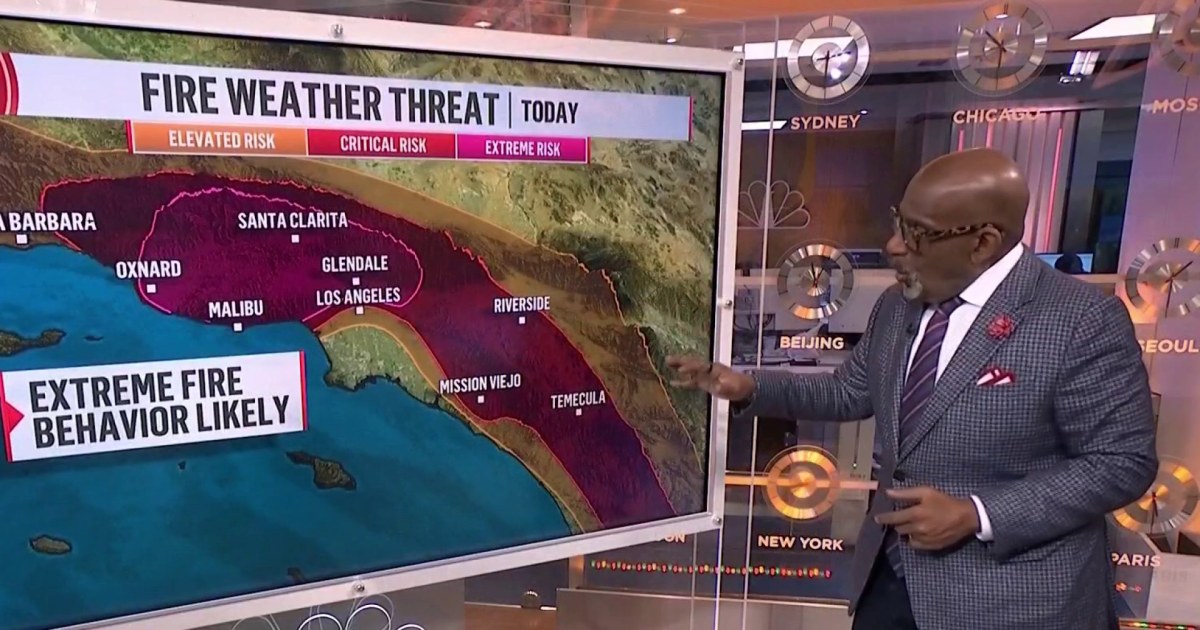Al Roker Sounds Alarm on California’s Wildfire Crisis: Are We Prepared?
As the summer sun blazes over California, the state is once again grappling with the devastating impact of wildfires. Recently, renowned meteorologist Al Roker raised the alarm about the escalating wildfire crisis, describing the current conditions as “explosively dangerous.” With landscapes scorched and communities at risk, it poses a crucial question: are we truly prepared for this recurring disaster?
Understanding the Wildfire Landscape
Wildfires in California are not new; in fact, they have become an annual event that locals anticipate with a mix of dread and resignation. What has changed over the years is the intensity and frequency of these fires. Climate change, prolonged droughts, and increasing temperatures have created a perfect storm for wildfires to thrive. In 2023, the situation has reached alarming levels, prompting experts like Roker to voice their concerns.
- Climate Change: Rising global temperatures contribute to extended dry seasons and drought conditions, making vegetation more susceptible to igniting.
- Urban Development: As more homes are built in fire-prone areas, the risk to human life and property increases significantly.
- Forest Management: Poor forest management practices, including fire suppression techniques, have led to an accumulation of combustible materials.
The Role of Meteorology in Wildfire Preparedness
Al Roker’s perspective as a meteorologist is invaluable when discussing the wildfire crisis. His insights shed light on how weather patterns directly influence fire behavior. For instance, Roker highlights that strong winds can rapidly spread flames, creating unpredictable and dangerous conditions for firefighters and residents alike. Understanding these meteorological factors is essential for effective wildfire preparedness.
Current State of Wildfire Preparedness
Given the alarming trends, it’s vital to assess how prepared California is to tackle this crisis. While there are strategies in place, experts argue that they may not be sufficient to meet the evolving challenges.
- Evacuation Plans: Many communities have established evacuation routes and plans, but the effectiveness of these measures can be compromised during sudden fire outbreaks.
- Firefighting Resources: Fire departments across California are equipped with advanced technology and trained personnel, but resources can be stretched thin during peak fire season.
- Community Awareness: Public education campaigns about fire safety and preparedness have improved, yet many residents still lack adequate knowledge of how to respond in emergencies.
How Can We Improve Preparedness?
While the challenges are daunting, there are several strategies that can enhance wildfire preparedness in California:
- Enhanced Early Warning Systems: Implementing advanced weather forecasting and communication systems can provide real-time alerts to residents about fire risks.
- Increased Funding for Fire Services: Allocating more resources to firefighting and prevention programs can ensure that agencies are equipped to respond effectively.
- Community Engagement: Encouraging local communities to participate in fire prevention activities, such as creating defensible space around homes, can significantly mitigate risk.
- Legislative Support: Advocating for policies that support sustainable land management practices can help reduce the fuel load in forests and prevent catastrophic fires.
Personal Stories: The Human Impact of Wildfires
Behind the statistics and expert opinions, the human stories of those affected by wildfires are poignant reminders of the crisis we face. Many families have lost their homes and possessions, and communities have been shattered. Survivors recount harrowing experiences of evacuation and loss, underscoring the urgent need for better preparedness.
One resident from Sonoma County, whose home was engulfed by the flames last year, shared, “We had to leave everything behind in minutes. The fear was overwhelming, and we didn’t know if we would ever return.” Such narratives emphasize the importance of preparedness—not just for individuals but for entire communities.
Looking Ahead: Optimism in Action
Despite the challenges, there is a silver lining. Communities are coming together to develop innovative solutions to combat wildfires. Local governments are investing in better infrastructure and more robust emergency services. Nonprofit organizations are mobilizing volunteers for fire safety education, and tech companies are developing apps to assist in evacuation planning.
Moreover, with an increasing focus on climate change mitigation, there is hope that future legislation will address the root causes of wildfires. Initiatives aimed at restoring natural landscapes and improving forest health are gaining traction, potentially reducing the severity of fires in the long run.
Conclusion: A Call to Action
As Al Roker and other experts sound the alarm on California’s wildfire crisis, it is a wake-up call for all of us. The question, “Are we prepared?” should not only resonate with policymakers and emergency services but also with every individual living in fire-prone areas.
Preparedness requires a collective effort—one that involves education, community engagement, and proactive measures. By prioritizing these areas, we can not only respond to wildfires more effectively but also work towards a future where these devastating events are less frequent and less destructive. The time to act is now; let us rise to the challenge and protect our communities, our homes, and our environment.
See more Your Daily Weather



